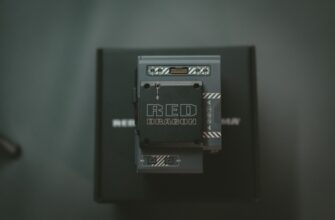Why Your Crypto Wallet Needs Ironclad Password Protection
In the volatile world of cryptocurrency, your wallet password is the ultimate guardian against devastating losses. Unlike traditional bank accounts, crypto transactions are irreversible and anonymous – once digital assets are stolen, recovery is nearly impossible. This tutorial demystifies how to properly store your crypto wallet with a robust password, transforming you from a vulnerable holder to a security-savvy investor. We’ll walk through setup best practices, password creation techniques, and recovery protocols to shield your Bitcoin, Ethereum, and altcoins from hackers.
Step-by-Step Password Setup Guide
- Choose Your Wallet Type: Select between hardware wallets (Ledger, Trezor) for maximum security or reputable software wallets (Exodus, Trust Wallet) for convenience.
- Download from Official Sources: Always get apps from developer websites or official app stores to avoid malicious clones.
- Initiate Wallet Creation: Launch the application and select “Create New Wallet” – never use pre-generated wallets.
- Set Your Defense Password: When prompted, create a password with:
- 12+ characters mixing uppercase, numbers, and symbols
- No personal information (birthdates, names)
- Uniqueness (never reuse existing passwords)
- Backup Recovery Phrases: Write down the 12-24 word seed phrase on physical paper – this is your failsafe if passwords are forgotten.
- Password Confirmation: Re-enter your password and complete setup. Test access before transferring funds.
Crafting Unbreakable Passwords: Your Digital Vault Blueprint
A weak password is an open invitation to thieves. Implement these strategies:
- Passphrase Power: Combine 4+ random words (e.g., “CactusTangoBatteryClip”) for length and memorability
- Leet Speak Conversion: Substitute letters with numbers/symbols (“S3cur!tyR0ck$”)
- Password Manager Integration: Use tools like Bitwarden or KeePassXC to generate/store complex passwords securely
- Two-Factor Authentication (2FA): Enable app-based 2FA (Google Authenticator) for wallet login where supported
- Biometric Backups: Utilize fingerprint/face ID on mobile wallets as secondary protection
Password Recovery Protocol: When Memory Fails
Forgotten passwords don’t mean lost crypto if you:
- Locate your physical recovery phrase (seed words)
- Uninstall and reinstall the wallet software
- Select “Restore Wallet” and enter all seed phrases in exact order
- Set a NEW password during restoration
- Verify successful access with small test transactions
Critical Note: Without your seed phrase, password recovery is impossible. Store it in a fireproof safe or encrypted digital vault – never in cloud notes or photos.
FAQs: Crypto Wallet Password Security Explained
Q: Can hackers bypass my wallet password?
A: With strong encryption (AES-256 standard), brute-force attacks on complex passwords are computationally impractical. Vulnerabilities usually stem from phishing or device compromise, not password cracking.
Q: Should I change my wallet password periodically?
A: Unlike website logins, frequent password changes aren’t necessary for cold storage wallets. Focus instead on never sharing devices, using antivirus software, and keeping recovery phrases offline. Change passwords only if compromise is suspected.
Q: Are biometric logins (fingerprint) safer than passwords?
A: Biometrics offer convenience but aren’t foolproof – they can be bypassed via sophisticated spoofing. Always pair biometrics with a primary password for multi-layered security.
Q: What if my password-protected device gets stolen?
A: Immediately transfer funds using a secondary device if possible. Most wallets allow remote wiping via linked accounts. For hardware wallets, the thief still needs your PIN/password – rendering the device useless without it.
Final Security Reinforcement
Implementing password protection is just the foundation of crypto security. Combine it with regular software updates, avoidance of public Wi-Fi for transactions, and skepticism toward unsolicited requests for keys. Remember: In blockchain’s decentralized world, you are the bank manager, security guard, and insurance policy. Treat your password not as a key, but as the cornerstone of your financial sovereignty.








